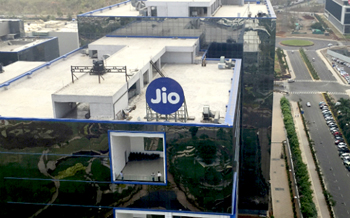New Delhi, Jan 16: As part of its quarterly report Reliance Industries on Monday announced that four months after its launch Jio has over 72.4 million users. The company said that this makes Jio one of the fastest growing services ever and claimed that in the initial days it added nearly 6 lakh consumers daily.
 But even as Reliance touted what it has achieved with Jio, it also acknowledged that some problem with the network continued to persist. In particular it talked about the failure rate for the call connectivity between a Jio number and a number provided by other telecom operators. And for the high failure rate, it squarely blamed Airtel.
But even as Reliance touted what it has achieved with Jio, it also acknowledged that some problem with the network continued to persist. In particular it talked about the failure rate for the call connectivity between a Jio number and a number provided by other telecom operators. And for the high failure rate, it squarely blamed Airtel.
"Jio continues to face interconnection congestion issues with some of the large operators on account of inadequate provision of points of interconnection (POI) capacities even months after commencement of services by Jio... The resultant call failure rates continue to be of the order of 175 calls failing out of every 1,000 calls from Jio to Airtel network when the QoS regulations mandate that no more than 5 calls out of every 1,000 calls can fail. Indian customers are still being denied the benefits of superior voice technology on Jio's state-of-the-art network," notes the Reliance report.
The report also highlights the Jio announcement the company made earlier in December. It started by offering free service as part of its Welcome Offer in the first week of September. But in December this offer ended and all the consumers were moved to the Happy New Year Offer, which also gave consumers same free calls and data connectivity. Although, unlike in the earlier offer that gave consumers FUP limit of 4GB per day for data consumption, the new plan gives 1GB FUP.
This Jio offer, says Reliance, will continue until March 31, after which the company hopes to start commercial operations. "Under (this offer) all the Jio subscribers are entitled to certain special benefits, which comprise of Jio's Data, Voice, Video and the full bouquet of Jio applications and content, absolutely free, up to 31st March 2017. The benefits will be available to all subscribers signing up for Jio services up to 3rd March 2017," noted the company.
Apart from focusing on the wireless services, Jio in the coming months is also expected to rollout Fibre service. As India Today Tech reported earlier, the company is already testing the Jio Fibre in certain localities in Mumbai and is offering early consumers 3 months of free data use with speed of up to 100mbps and FUP limit of 100GB per month.





Comments
Add new comment